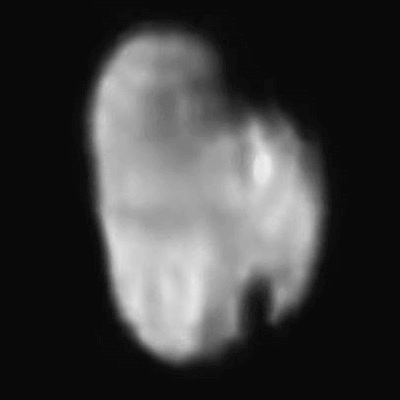
- Moon Name: Hydra
- Designation: Pluto III
- Date Discovered: June 15th, 2005
- Discovered by: Pluto Companion Search Team
- Average Orbit of Pluto: 40,233.16 mi
- Total Volume: 46,886.63 mi3
- Surface Area: 6,288.06 mi2
16 Hydra Facts for Kids
- Hydra is one of Pluto’s five know moons (natural satellites).
- Hydra is named after a nine-headed serpent in Greek mythology that lives in the underworld.
- Hydra is also designated as Pluto III.
- Hydra was discovered on June 15th, 2005 by the Pluto Companion Search Team.
- Hydra was discovered using images taken by the Hubble Space Telescope.
- Hydra was discovered on the same day Nix, another moon orbiting Pluto.
- The average orbit distance for Hydra is 40,233.16 mi.
- The surface area of Hydra is 62,88.06 mi2.
- The total volume of Hydra is 46,886.63 mi3.
- Hydra completes an orbit around Pluto every 38.2 days.
- Hydra has a chaotic rotation and it’s estimated it completes a full rotation every 10 hours.
- Hydra is the farthest moon from the dwarf planet Pluto.
- Hydra is the second largest moon orbiting Pluto.
- Hydra has ice water on its surface, causing it to be highly reflective.
- The NASA space probe New Horizons visited the Pluto system in 2015 and took detailed images of Hydra.
- It’s estimated that Hydra formed by two smaller objects around Pluto merging together into one large object.
Additional Resources on Pluto’s moon Hydra
- Learn About Hydra – Read more about Pluto’s moon Hydra on the NASA Solar System Exploration website.
- Hydra Data and Stats – Find the latest data and statistics of the moon Hydra on the NASA Solar System Exploration website.
- The Moons of Neptune – Discover more moons of the dwarf planet Pluto on the Britannica website.
- Hydra (Moon) – Wikipedia – Learn more about Hydra, one of Pluto’s moons, on the Wikipedia website.
